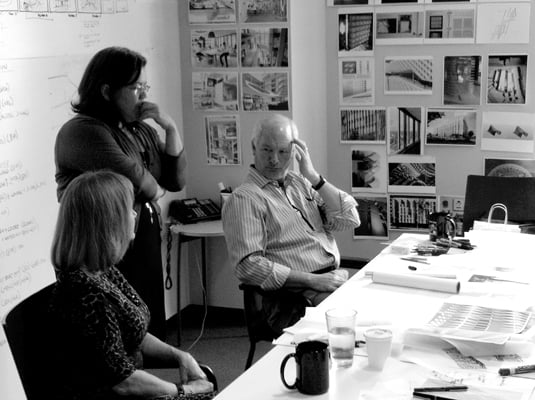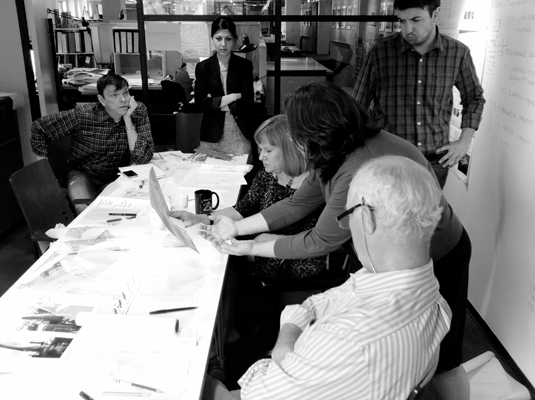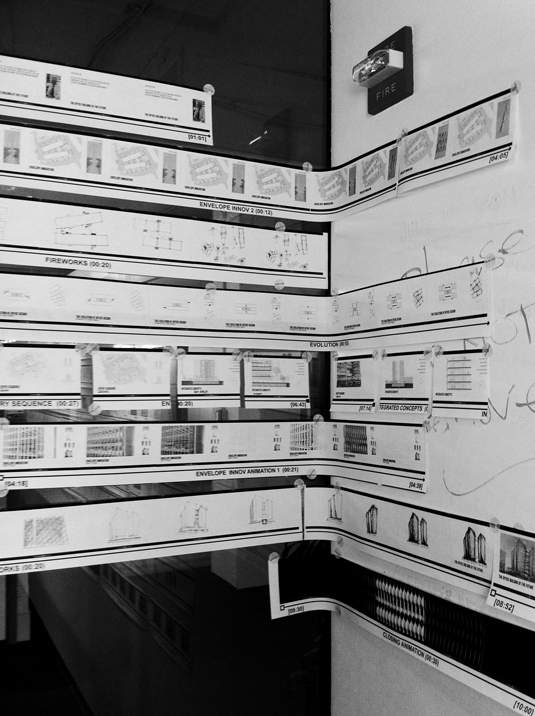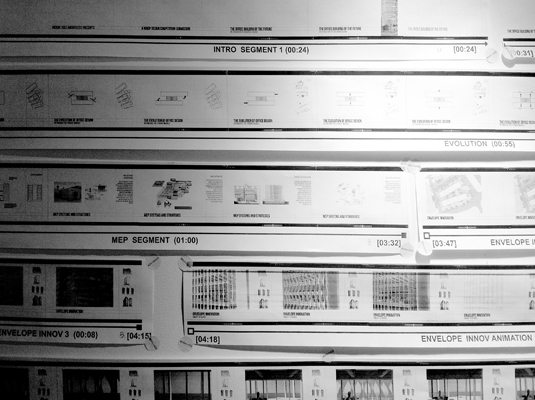
February 10, 2013
Hickok Cole Concludes Experiment in “Open Sourcing” Ideas
Hickok Cole Architects attempts to rethink the office of the future
We had modest goals when we first took on the “ideas competition” to design the office building of the future. All we wanted was to use the tight deadline—the discipline and structure that comes with a competition—to organize our ideas about the future of office buildings. In the beginning we saw this as a way to engage in an internal debate about a myriad of related topics. We began as we always do, asking many questions. This time, though, we went beyond our usual inquiry: Will there even be office buildings in the future? How will people want and need to work in an office 15 or 20 years from now? What impact will technology have on design and engineering? But we never once asked, “What will it look like?”
As principals, we calculate the risk against the rewards for our architecture practice. Naively, we guessed that this project would involve a few weeks of work for those staff members who weren’t fully employed on other projects. Our economic risk would be minimal. Our reward would be a 10-minute presentation to show our developer clients, inspiring their thinking about office buildings. With no clear vision of what could happen, we nevertheless pushed our team to reach for something beyond what they already knew. If we were going to enter this competition, then we were in it to win. Go big or go home.

The effect on the office was profound. We took the opportunity to look over the horizon, unfettered by the normal project restrictions and, in the process, energized everyone. Suddenly they all wanted to get involved. We engaged the best engineers to contribute their ideas. We decided to do a video (which we’d never done before). Most importantly, we would allow ourselves to dream. Suddenly the risk expanded far beyond a monetary risk. Now we were taking an emotional risk as well, pouring our hearts and minds into a collaborative effort and then, perhaps, ending up being disappointed with the outcome. When we announced to the office, over champagne, that we had been named one of four winners nationally, everyone cheered!

The impact of this competition went beyond boosting our enthusiasm. It has been far-reaching. At the national level it has opened a dialogue in the real estate and architectural communities about what office buildings could and should be in the future. We’ve been asked to present our concepts at three different real estate venues nationwide. Our local real estate community has asked to see the presentation. And, of course, we have shown it to many of our clients. Within the architectural profession the same dialogue, but along different lines, has ensued. We plan to present our hard-won vision at national AIA venues and local chapter events. We are publishing our findings in partnership with Metropolis because, as a firm, we believe in “open sourcing” our ideas. We subscribe to the belief that all boats really do float on the rising tide. We plan to share our video as far and wide as we can.

The most profound impact of this project has been on every one of us. From newbies to veterans, we all feel a real sense of pride. We are as proud of the extraordinary effort as we are with the outcome. Working nights and weekends, learning new software, trying things we’ve never tried before ignited the firm. Everyone looked for some way to contribute. If it meant coming in on a weekend to network 15 computers to gain enough computational power to produce an animated three-dimensional model of the skin, they were there. The outcome is extraordinary. It is something that none of us could have imagined before.

The most lasting impact will be in what will follow from here. As a firm, we plan to continue to investigate the topic. We may not undertake original research into the science of materials—there are others more qualified than we are to do that work—but we will do what architects have always done best. We will refine those ideas and look for opportunities to integrate them into a cohesive whole and investigate their implications in the design and construction of buildings. We plan to reach out to universities to support their work and collaborate with them. We are looking for grants to help fund this effort. And in the final analysis, the impact of this modest little competition has the potential to set our firm on a new and parallel course, where research and design go hand in hand into an expanded future.

Michael E. Hickok, AIA, is senior principal at Hickok Cole Architects in Washington, DC.





